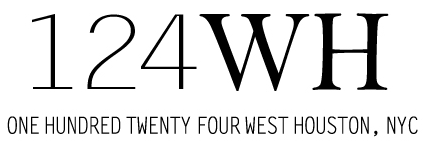The Village
|
|
Greenwich Village - also known as “The Village” - is the original corner of cool, the closest any American neighborhood comes to a corner of Paris. This part of town has been home to artists and writers, nonconformists, entertainers, intellectuals, and bohemians since the turn of the 20th century. Downtown charm is personified in lost of low-rise townhouses, thumbnail size gardens, secret courtyards, and a wacky serpentine layout of streets. Washington Square Park and the rows of townhouses around it with charming alleys behind them are all frozen in time. The park, with its arch famous from much movie exposure, is the heart of the Village. This 9 ½ -acre park at the foot of Fifth Avenue is an oasis and circus combined, where skate boarders, jugglers, stand-up comics, sitters, strollers, sweethearts, chess players, fortune tellers, and daydreamers converge and commune. Washington Mews and MacDougal Alley are quiet cobblestone lanes right off the square. Legendary streets such as MacDougal, Astor Place, and Bleecker (famous Beat and hippie hangouts) are lined with super-hip boutiques, deli’s displaying esoteric beers from around the globe, and cafes and restaurants of all stripes. It makes sense that New York University is in the Village (in fact, centered around Washington Square) an area that has been home to some of the world’s most famous writers and artists including Henry James, Edith Wharton, Edgar Allan Poe, Mark Twain, Walt Whitman, Eugene O’Neill, Norman Rockwell, Jackson Pollock, Mark Rothko, Willem de Kooning, and Beat writers Jack Kerouac, Allen Ginsberg, and Lawrence Ferlinghetti. At night, Greenwich Village comes alive with sounds from late-night coffeehouses, cafés, experimental theaters, and music clubs. Bars and restaurants ad infinitum serve everything from cranberry martinis and celestial sushi to pita-wrapped shwarma. Searching for the soul of the Beat generation? At fabled coffeehouses like Caffe Reggio and Café Figaro, you can order a double espresso or cappuccino and pretend for a few minutes that you’re Ginsberg, Keruouac, or William Burroughs. Greenwich and West VillageThe basics: “There’s definitely more lace than leather in the Village today, and many more families,” says Ed Ferris of William B. May. Brokers say they’re seeing lots of entertainment types as well as Wall Streeters who want to be near work. Although some high-rises have popped up in the last few years, there’s still no better spot for charming townhouse apartments on quiet, tree-lined streets. Boundaries: Stretching roughly from 14th to Houston Streets, between the Hudson River and Broadway. Sixth Avenue demarcates the two neigborhoods. Borders: East Village, Soho, and Chelsea. What’s new: Old Villagers hate it, but the sexiest new building (and one of the few to go up recently) are Richard Meier’s towers at 173-176 Perry Street. Calvin Klein, Martha Stewart, and Nicole Kidman have all bought there. Horatio House, a brick low-rise at 637 Hudson Street, and the Greenwich, a 79-unit loft building on 13th Street - Related’s superior ink condominiums desgined by Robert A. M. Stern, were also completed in the last decade. Prediction: Don’t get your hopes up for a bargain, even in a down economy. “The Village is the most desirable part of downtown,” declares Corcoran’s Mark Schoenfeld, and supply remains drum-tight. Greenwich Village of- fers an exceptional life style for many New York City residents. The low density of buildings and its proximity to amenities such as the new waterfront Hudson Park along the Hudson River, Bleecker Park on Abingdon Square with its wonderful children’s playground and Washington Square Park located at the heart of Greenwich Village where Fifth Avenue begins, all within walking distance, create a relaxed environment for city life. Retail hubs are located on Eighth, Seventh, Sixth, & Greenwich Avenues, Bleecker Street, Christopher Street and West 14th Street including the Meat Packing District; currently the hottest retail/restaurant/office/hotel destination in Manhattan. Restaurants, bars and cafes are abound in Greenwich Village including famous jazz institutions such as The Village Vanguard and The Blue Note. Surrounding neighborhoods include Chelsea to the north, Tribeca to the south, the East Village to the east, Union Square and the FlatIron district to the northeast, and NoHo & SoHo to the southeast. The West Village has a retail component comprised primarily of small, local businesses. However, many retail shops are considered institutions, which help define the character of the area. The lack of land for development has precluded the construction of high-rise condominiums or rental buildings except at the very fringes of the neighborhood. The office market in the West Village is comprised of a handful of Class B and C office buildings, as well as the Saatchi & Saatchi Building located on Hudson Street at the south end of the West Village. The blend of retail services and commercial buildings permits many to live and work in the same neighborhood. These elements will continue to make this neighborhood a highly desirable community to work and live in, benefiting the value of the 227-29 Waverly Place. TransportationThe IND Sixth and Eighth Avenue lines (A, B, C, D, E, F and V) on West 4th Street and Sixth Avenue, and the No. 1 line stops along Seventh Avenue at Christopher Street and also West Houston Street. Surface transportation is also available on West 14th Streets for east-west commutation, with additional north-south connections on 7th, 8th and 9th Avenues and Hudson Street. |









